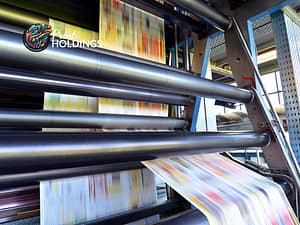In the realm of occupational safety, visibility isn’t just a measure of being seen; it’s a critical component in the prevention of workplace accidents and injuries. The use of reflective and high-visibility safety workwear stands as a testament to the importance of visibility, serving as a vital barrier against the multitude of risks present in various work environments. This initial discussion aims to shed light on how enhanced visibility through safety workwear significantly contributes to a safer workplace, ultimately safeguarding workers from potential hazards that could lead to accidents or even fatalities.
The Critical Role of Visibility in Workplace Safety
Visibility plays an indispensable role in workplace safety, particularly in environments where workers are exposed to vehicular traffic, operating heavy machinery, or working under low light conditions. The principle is straightforward: the sooner a worker is seen, the more time there is to prevent an accident. Reflective and high-visibility safety workwear acts as a beacon, ensuring that workers are easily noticeable, thus reducing the risk of collisions or accidents. This heightened visibility is especially crucial during dawn, dusk, or at night when visibility is naturally compromised, as well as in inclement weather conditions such as fog or heavy rain.
Understanding High-Visibility Workwear
High-visibility workwear is specifically designed to make the wearer stand out from their environment, making them instantly recognizable and visible from a distance, and in all types of lighting conditions. This section delves into what makes safety workwear ‘high-visibility,’ the materials and design elements that are fundamental to its effectiveness, and the standards that govern its use across various industries.
What Constitutes High-Visibility Workwear?
High-visibility safety workwear is characterized by its vibrant colors and reflective materials. Typically, these garments are made from fluorescent materials in colors like bright yellow, orange, or green. These colors are highly effective during the day, especially in daylight, enhancing the contrast between the wearer and their environment. For nighttime visibility, these garments incorporate reflective tapes or strips. These reflective materials bounce back light to its source, such as a vehicle’s headlights, making the wearer visible even in low light conditions. The design of these garments often includes a combination of both fluorescent materials and reflective strips to ensure 24-hour visibility.
Standards and Regulations for High-Visibility Workwear
The adoption and enforcement of standards and regulations for high-visibility workwear are crucial for ensuring that the garments provide the necessary level of visibility and protection. In many countries, including the United States and those in the European Union, high-visibility workwear must meet specific standards. For example, in the US, the American National Standards Institute (ANSI) and the International Safety Equipment Association (ISEA) have established the ANSI/ISEA 107 standard, which specifies the design, performance specifications, and use of high-visibility safety apparel.
Similarly, in Europe, the EN ISO 20471 standard provides guidelines for high-visibility clothing. These standards categorize high-visibility garments based on the level of risk in the work environment, dictating the amount and type of reflective material and the background fabric color used in the safety workwear.
Enhancing Worker Safety through Advanced High-Visibility Safety Workwear
The Science Behind High-Visibility Workwear
The effectiveness of high-visibility safety workwear is not merely a product of bright colors and reflective surfaces; it’s rooted in a combination of scientific principles and technological advancements. This section explores the sophisticated technologies that underpin reflective materials, alongside an examination of how color psychology plays a pivotal role in enhancing the visibility and safety of workers.
Reflective Technologies Used in Safety Apparel
The cornerstone of high-visibility safety apparel is its reflective technology, designed to return light to its source and thereby ensure the wearer’s visibility even in low light conditions. This technology encompasses a range of materials, including microprismatic tape and glass bead reflective fabric. Microprismatic tape contains tiny prisms that reflect light more efficiently than traditional materials, while glass bead fabric reflects light by bouncing it off microscopic beads embedded in the tape. These materials are meticulously engineered to provide maximum visibility from as many angles as possible, ensuring that workers are seen by drivers or operators of heavy machinery, thereby significantly reducing the risk of accidents.
Color Psychology and Visibility
The selection of colors for high-visibility workwear is influenced by color psychology, which studies how different colors affect human perception and behavior. Fluorescent yellow-green, for example, is one of the most visible colors to the human eye under various light conditions, making it a popular choice for safety apparel. Orange is another preferred color, particularly in industrial settings, as it stands out against both natural and urban backdrops, ensuring that wearers are easily distinguishable. Beyond visibility, the psychological impact of these colors on both the wearer and observers can enhance alertness and draw attention, further contributing to a safer work environment.
Selecting the Right High-Visibility Workwear
Choosing the appropriate high-visibility safety workwear is crucial for ensuring the safety and well-being of workers. This selection process involves a comprehensive assessment of workplace hazards and the specific visibility needs of the environment, as well as considerations for the wearer’s comfort and the garment’s suitability for the tasks being performed.
Assessing Workplace Hazards and Visibility Needs
The first step in selecting the right high-visibility workwear involves evaluating the specific risks and visibility challenges present in the workplace. This evaluation should consider factors such as the level of vehicular traffic, the nature of the work being performed, and the lighting conditions. For environments with high vehicular traffic or where workers operate near moving machinery, garments with a higher level of reflectivity and brighter colors are essential. Additionally, the selection process should account for varying lighting conditions, ensuring that the chosen workwear provides adequate visibility both day and night.
Fit, Comfort, and Wearability Considerations
While visibility is paramount, the fit, comfort, and wearability of safety workwear are equally important. Garments that are too loose or too tight can hinder movement, reduce worker efficiency, and even pose safety risks. Therefore, it is essential to choose workwear that offers a balance between visibility and comfort, allowing for ease of movement and adaptability to different body types. Additionally, materials that provide breathability and are suitable for the climate can help maintain comfort over long periods, ensuring that workers remain protected without compromising on their ability to perform their duties effectively.
Ensuring Durability and Compliance: Navigating High-Visibility Safety Workwear Maintenance and Challenges
Maintenance and Care of High-Visibility Workwear
Maintaining the integrity and functionality of high-visibility safety workwear is crucial for ensuring it continues to provide optimal protection for workers. Proper care and maintenance not only extend the life of these garments but also ensure they remain effective in keeping workers visible and safe.
Best Practices for Cleaning and Maintenance
To preserve the high-visibility properties and durability of safety workwear, it’s essential to follow recommended cleaning procedures. Regular cleaning helps remove dirt and contaminants that can diminish the garment’s reflective capabilities. Manufacturers often provide specific instructions for washing and drying high-visibility clothing to prevent damage to reflective tapes and fluorescent materials. Using mild detergents, avoiding bleach, and drying at low temperatures are general practices that can help maintain the garment’s visibility features. Additionally, inspecting the workwear for damage, such as tears or faded areas, should be part of the routine maintenance to ensure the safety features are intact.
When to Replace High-Visibility Workwear
High-visibility workwear, like all safety equipment, has a service life that depends on the frequency of use and the conditions under which it is worn. Key indicators that it’s time to replace high-visibility garments include noticeable fading of the fluorescent material, significant damage or wear to the fabric, and diminished reflectivity of the tapes. Adhering to these criteria ensures that the workwear continues to meet safety standards and provide the necessary level of visibility to protect workers effectively.
Overcoming Challenges with High-Visibility Workwear
While high-visibility workwear is essential for safety, its integration into the workplace can present challenges, from ensuring compliance to balancing safety with other workplace requirements.
Balancing Safety with Other Workplace Requirements
Integrating high-visibility workwear with other personal protective equipment (PPE) and workplace uniforms requires a careful balance to ensure that all safety and operational requirements are met. Selecting high-visibility garments that are compatible with other PPE, such as safety harnesses or respiratory equipment, ensures that workers are protected without compromising on safety or functionality. Additionally, choosing workwear that aligns with the company’s branding and uniform policy can help maintain a professional appearance while ensuring safety.
Ensuring Compliance and Encouraging Worker Adoption
Achieving widespread compliance with high-visibility workwear policies can be challenging. Educating employees on the importance of high-visibility workwear in preventing accidents and enhancing safety is crucial. Engaging workers in the selection process can also encourage adoption by ensuring the chosen workwear meets their needs for comfort and functionality. Regular training sessions, demonstrations, and the inclusion of workwear policies in safety protocols can reinforce the importance of compliance. Recognizing and rewarding compliance can further motivate workers to adhere to safety workwear guidelines.
Conclusion
High-visibility safety workwear plays a vital role in protecting workers in hazardous environments by enhancing their visibility. Proper maintenance and care of these garments ensure their effectiveness and longevity, while addressing the challenges of compliance and integration with other workplace requirements ensures that safety does not compromise comfort or functionality. By prioritizing the maintenance, care, and strategic integration of high-visibility workwear, employers can foster a safer work environment and protect their most valuable asset: their employees.










